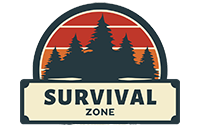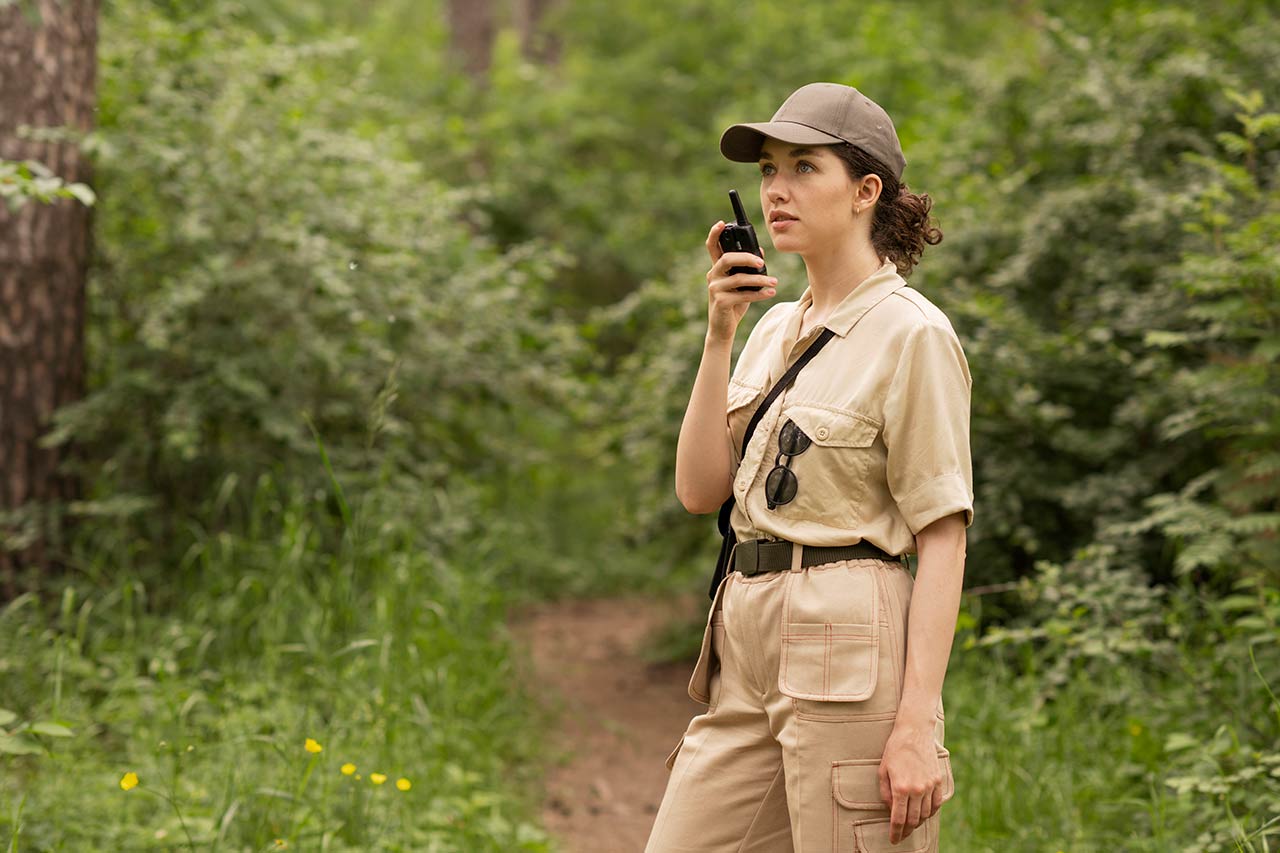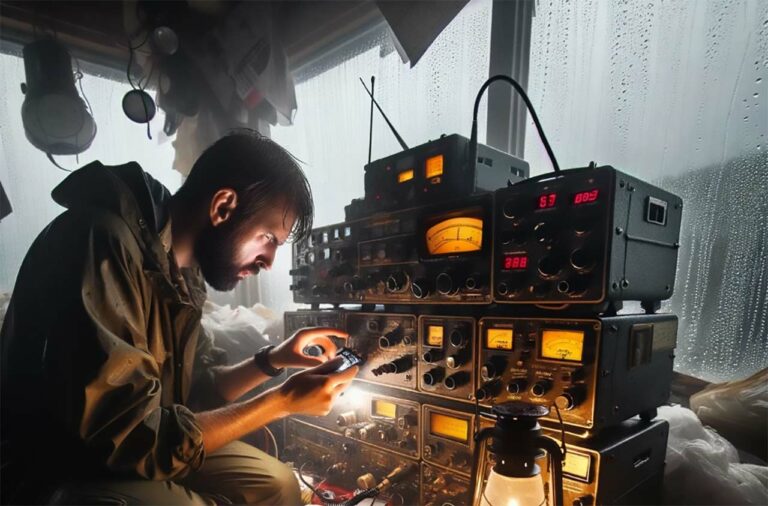Prepper Radio Frequencies: Essential Guide For Survival Communications
As a prepper, you understand how important communication can be during crisis situations. One of the most reliable ways to stay informed and connected is through radio frequencies. Prepper radio frequencies are an essential tool to have in your preparedness toolbox, providing a means to communicate with like-minded individuals and gather crucial information during emergencies.
There are various types of radio frequencies that can come in handy for preppers, including CB (Citizen Band), Ham Radio (Amateur Radio), FRS (Family Radio Service), GMRS (General Mobile Radio Service), and more. These communication channels keep you updated, informed, and connected in a range of situations, from local disasters to widespread catastrophes.
Understanding Radio Frequencies
Frequency Bands
Frequency bands are ranges of radio frequencies that are grouped together based on their characteristics. In the prepper world, you’ll likely encounter VHF, UHF, and HF bands. Each of these bands has its advantages and limitations:
- VHF (Very High Frequency): VHF operates between 30 to 300 MHz. It’s known for its longer range than UHF but is affected by obstacles like buildings and trees.
- UHF (Ultra High Frequency): UHF ranges from 300 MHz to 3 GHz. It provides better signal penetration through obstacles, which makes it useful in urban settings. However, it has shorter wavelengths, so the range is typically smaller.
- HF (High Frequency): HF occupies 3 to 30 MHz and offers long-range communication during optimal conditions. Prepper HAM radio operators often rely on this band for long-distance communication.
AM versus FM Frequencies
When it comes to prepper communications, you might encounter both AM (Amplitude Modulation) and FM (Frequency Modulation) frequencies. The primary difference between them lies in how they transmit signals:
- AM: In AM transmissions, the amplitude of the carrier wave is modified to convey information. While it provides longer range, it’s more susceptible to noise and interference.
- FM: FM transmissions vary the frequency of the carrier wave instead of the amplitude. By doing this, they offer better signal clarity and quality. However, their range is usually limited compared to AM frequencies.
VHF and UHF Frequencies
For prepper communications, VHF and UHF frequencies are commonly used:
- The 2m simplex frequency at 146.52 MHz is a popular VHF frequency. It’s monitored by many HAM radio operators and offers a better chance of call reception.
- The 70cm simplex frequency at 446.00 MHz is a UHF frequency you could use when communicating within urban settings or areas with dense obstacles.
Documenting the following emergency prepper frequencies will come in handy:
- Channel 3 at 26.985 MHz: Prepper CB Network
- Channel 4 at 27.005 MHz: The American Preppers Network
- Channel 9 at 27.065 MHz: Universal CB Emergency & REACT Channel (Radio Emergency Associated Communication Teams)
Note: Channel 9 has traditionally been an emergency channel, so keep it open unless you have an emergency.
HF Frequencies
HF frequencies are ideal for long-range communication. Since they can travel great distances, they’re commonly used by preppers for international contact. However, the propagation of HF signals is highly affected by solar activity and the Earth’s atmosphere.
As a prepper, broadcast frequencies in the shortwave radio spectrum are essential for receiving critical information during emergencies. Prepper HAM radio operators often rely on the 20m, 40m, and 80m bands for long-distance communication with others in the community.
Prepper Communication Techniques
Ham Radio
Ham radios are a popular choice for preppers as they provide long-range communication capabilities. To operate a ham radio, you need a license, which is available in three levels: Technician, General, and Extra. Each level grants you access to different radio bands and frequencies. Installing a high-quality antenna will improve your ham radio’s range and performance. With ham radios, you can join networks like The American Prepper Radio Network (TAPRN) to stay connected with fellow preppers.
CB Radio
CB (Citizen Band) radios are another useful tool in your prepper communication arsenal. These radios operate on 40 designated channels and do not require a license to operate. The range for CB radios is usually between 1 to 5 miles, depending on the terrain and equipment used. Connect with other preppers through the Prepper CB Network to share information and resources. Just remember to familiarize yourself with the proper radio etiquette when using CB radios.
GMRS and FRS Radios
General Mobile Radio Service (GMRS) and Family Radio Service (FRS) radios are convenient for short-range communications up to about 5 to 25 miles. Usually, you can find combined GMRS/FRS radios in big-box and sporting goods stores. GMRS requires a license, while FRS does not. These radios have eight channels in the 462 MHz range designated exclusively for GMRS use. It’s essential to understand the limitations and restrictions of each radio system to ensure you’re using them effectively and legally.
MURS Radios
Multi-Use Radio Service (MURS) radios are another option for your prepper communication needs. MURS radios operate on five designated VHF (Very High Frequency) channels and do not require a license. The range of these radios is typically a few miles, depending on the terrain and equipment. Ensure your communication equipment is compatible with MURS frequencies to make the most out of this radio system.
By having a solid understanding of these different radio communication options, you can better prepare yourself and your network for emergency situations.
Prepping for Emergencies
Emergency Radio Frequencies
When it comes to emergency situations, it’s crucial to stay informed as events unfold. One reliable means of communication is the radio, as cell service and the Internet may become unreliable. Familiarize yourself with various emergency frequencies to stay connected with critical updates and alerts. Some important emergency frequencies every prepper should know are:
- CB Radio: Channel 9 (27.065 MHz) – Universal CB emergency/REACT channel
- Ham Radio: Various prepper frequencies depending on your location and needs. 14.300 MHz (20 meters) and 7.268 MHz (40 meters) are popular for HF communication
Weather and Disaster Information
Staying updated on weather and natural disaster information is vital during emergencies. Some reliable sources to monitor include:
- National Weather Service (NWS): NOAA’s primary source of weather data, forecasts, and warnings.
- National Oceanic and Atmospheric Administration (NOAA) Weather Radio All Hazards (NWR): A nationwide network providing continuous weather information directly from the nearest NWS office
- Federal Emergency Management Agency (FEMA): Offers critical alerts and disaster response during emergencies
Weather and Emergency Frequencies:
- The NOAA Weather Radio All Hazards (NWR) broadcasts can be found in the VHF public service band at these seven frequencies (MHz): 162.400, 162.425, 162.450, 162.475, 162.500, 162.525, and 162.550.
Emergency Communications Systems
There are various emergency communication systems designed to support first responders, the military, and amateur radio operators during disasters. Some key systems include:
- Radio Amateur Civil Emergency Service (RACES): A volunteer organization assisting in providing communications during emergencies
- The Salvation Army Team Emergency Radio Network (SATERN): Offers emergency communications and disaster response services
- National Guard & US Coast Guard: Responsible for coordinating disaster response efforts, providing situational awareness, and conducting search and rescue operations
Note: The frequencies for these services can vary by regional and situational need.
Prepper Radio Networks
Local Network Solutions
One way to maintain communication during emergencies is by utilizing local radio networks. A popular option is the Amateur Radio Emergency Service (ARES) which is supported by the American Radio Relay League (ARRL). ARES members are volunteers that help provide essential communication services during emergencies, often in cooperation with local authorities. By joining an ARES group in your area, you can gain access to a reliable communication system and connect with other preppers.
Another local solution is establishing a network with fellow preppers and survivalists in your community. You can create a communication system using various radio frequencies dedicated to emergency and local nets. Collaborating with groups such as the American Preppers Network or the Survivalist Network can also help you stay informed and share valuable resources.
National and International Networks
On a larger scale, there are national and international prepper radio networks that can join for a wider range of information.
One such example is the Survivalist Radio Communications Network (SRCN), which offers a communication system during times of disaster. SRCN focuses on using both ham radio and the internet to create a reliable network when traditional communication methods may fail. Additionally, the ARRl’s National Traffic System (NTS) is designed to relay routine and emergency messages across the country and even internationally.
Remember, establishing connections in both local and larger networks is essential for staying prepared and informed during emergencies. By utilizing these resources, you can ensure access to reliable communication channels and invaluable information from the prepper and survivalist communities.
Frequently Asked Questions
What are commonly used emergency radio frequencies?
Emergency radio frequencies are crucial to staying informed and connected in times of crisis. The National Oceanic and Atmospheric Administration (NOAA) operates a nationwide system of VHF-FM weather radio stations, providing continuous broadcasts of forecasts, warnings, and other crucial information. NOAA frequencies typically include 162.400 MHz, 162.425 MHz, 162.450 MHz, 162.475 MHz, 162.500 MHz, 162.525 MHz, and 162.550 MHz.
Another option for emergency radio communication is using the Family Radio Service (FRS) and General Mobile Radio Service (GMRS) bands. These are short-range, two-way radio frequencies, with FRS operating between 462.5625 and 467.7125 MHz and GMRS operating between 462.550 and 467.725 MHz. Always make sure to follow FCC rules when using these frequencies.
Which ham radio frequencies are essential for preppers?
Ham radio, or amateur radio, is a popular and effective means of communication for preppers and survivalists. Some essential ham radio frequencies for preppers include:
- 146.52 MHz (2m simplex): This frequency is widely used for local communications among ham radio operators. It’s especially useful in situations where repeaters are non-functional or unavailable.
- 446 MHz (70 cm simplex): A UHF frequency used for local and regional communications, this is another option for operators in areas without available repeaters.
- 146.42 MHz, 146.55 MHz, and 14.325 MHz: These frequencies may be utilized for additional local and regional contact, as well as for long-distance communication and gathering information during emergencies.
Remember, you must have a valid FCC amateur radio license to operate on these frequencies, so be sure to study and pass the required exams before relying on these as a communication method.
Can I access military radio frequencies during emergencies?
It’s important to note that military radio frequencies are not intended for civilian use. Accessing or transmitting on these frequencies without authorization can result in legal consequences and potential interference with military communications. In emergencies, focus on utilizing civilian radio systems like ham radio, GMRS, or FRS instead. They are designed to provide reliable and efficient communication methods for civilians without jeopardizing the operations of other essential services.


